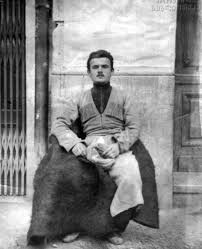Who Took Our Guns?
The tradition of bearing arms in Georgia is as ancient as the Georgian people themselves. For centuries, this right was never restricted, and it played a crucial role in preserving our nation from physical annihilation, safeguarding our gene pool, language, culture, and national consciousness. This enduring tradition remained intact until the early 20th century, when radical communists—the Bolsheviks—invaded Georgia and established a brutal dictatorship. Under such a regime, even discussing the right to bear arms became irrelevant. The population was disarmed, and only after its ability to resist was dismantled did the waves of bloody repression begin.
The most active and free-spirited members of society were the first to fall victim to this terror. Many managed to flee the country, while those who stayed faced a powerful, ruthless totalitarian system. Only hunting weapons were permitted—and even those under tight restrictions. The universal right to carry arms was transformed into a privilege reserved for the regime’s loyal servants.
After the Restoration of Independence
Following the restoration of Georgia's statehood, the situation in the country deteriorated rapidly. As state institutions collapsed, illegal weapons began circulating among the population—pistols, machine guns, hand grenades, and even grenade launchers. The mass release of prisoners and their newfound access to weapons led to a sharp and catastrophic increase in violent crime. Civil wars erupted in Tbilisi and Samegrelo, conflict broke out in Shida Kartli, and finally, the war in Abkhazia pushed the country to the brink of collapse. These conflicts were marked by mass looting, civilian massacres, and rampant kidnappings. The general population was left utterly defenseless in the face of rampant lawlessness. The police, overwhelmed and demoralized, could only provide sporadic assistance.
By 1994–1995, the situation began to stabilize somewhat. Most illegal weapons were confiscated, and key criminal leaders were either imprisoned, killed by police, or fled the country. The wars subsided, but the trauma lingered.
During the Soviet era, Georgian population had diverted from weapons (but accustomed with traditions of dance, song, wine, and toasts, was now in a state of collective shock). The early years of independence had left deep scars. A pervasive fear of weapons and those who bore them took hold. People vividly recalled the gunshots at night, the drunken, armed men roaming the streets, the attacks on families, thefts, and other tragic events. Over time, a powerful stigma emerged: weapons are dangerous, and an armed individual is a threat. In a bloodless and weakened nation, no one had the will or resources to restore a healthy weapons culture or to seriously address the issue of legal civilian armament.
Amid this difficult backdrop, the Law on Firearms was adopted in 1994. It closely mirrored the restrictive stance of Soviet-era Georgia toward civilian gun ownership. In 2003, a new Law on Weapons replaced it—still in force today and amended over 70 times. Despite these legislative changes, the current law retains the same fundamental approach: it harshly restricts civilian access to firearms. In the best traditions of the Soviet era, the right to bear arms remains a privilege reserved for a select caste. Though the right to self-defense is guaranteed on paper, in practice, it is a mere formality. Law-abiding citizens remain unable to effectively defend their families when necessary.
Why Are We Still Stuck?
Some members of society still repeat the familiar refrain: "Why do we need guns? Guns kill. Don’t you know Georgians? They get drunk and shoot each other." Based on such myths and misconceptions, the state justifies its tight control over firearms as an act of public protection—exactly as it did in the Soviet Union.
Dive deeper into the common myths that shape gun restriction policies here.

